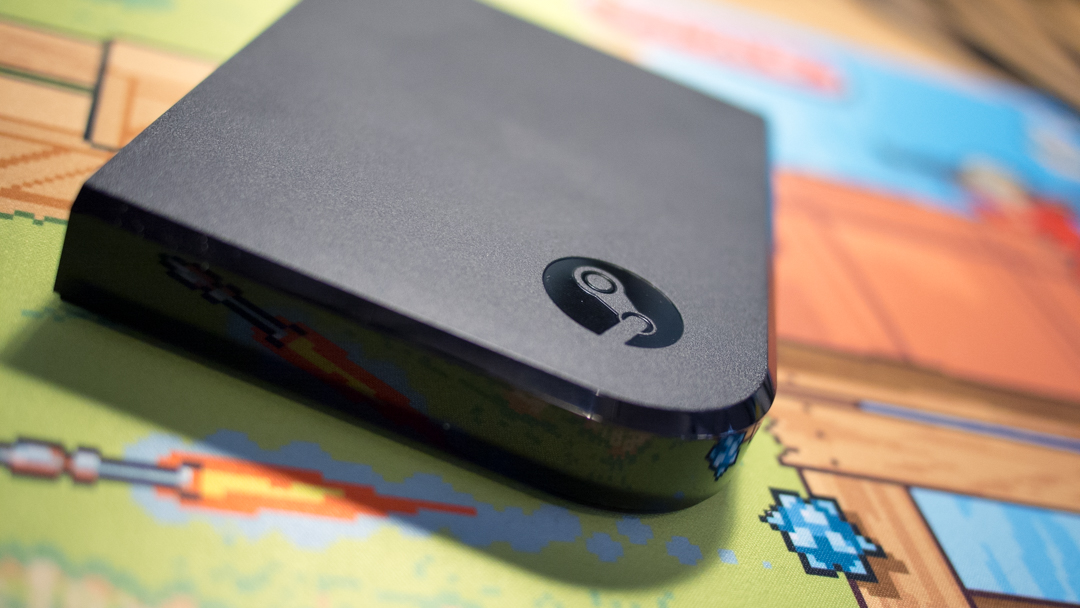Why you can trust TechRadar
Ultimately, the amount of fun you can have with Steam Link depends on the speediness of your gaming rig and networking gear. This product serves almost no purpose to someone who doesn't have either. I say "almost" because, technically, even weaker computers, or those stuck with Wi-Fi only can still get some use out of it: not necessarily on the gaming front, unless you enjoy poor framerates (does anyone?), but with movies.
Steam's growing database of films available for purchase (the selection spans the Mad Max films, a ton of gaming documentaries and unique indie shorts), means that the Link's use does extend further than just gaming, but not by much. There are many streaming boxes out there that do a much better job at being your dedicated movie player, but, atop its massive catalog of games, any extra functionality that the Link can offer is a plus.
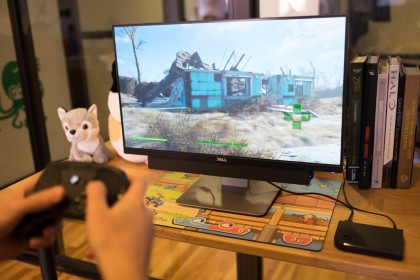
It's game time
My gear is middle-of-the-road. It's well above average in terms of performance, but in no way is it anything close to PC Gamer's Large Pixel Collider. Mine is a custom-built desktop running Windows 10 (the Link is also compatible with Mac and Linux machines), with a quad-core Intel i5 4670K and a 2GB Nvidia GeForce GTX 960 inside. The router that I use is nothing special, just a standard 802.11a/b/g/n setup provided by my ISP.
To squeeze the most out of my computer and local connection, I hooked everything up over ethernet and started playing. My first game to try out? Rocket League. It's currently one of my favorites and probably will be for a long time. But favoritism aside, it's a fast game that requires twitch accuracy and speedy specs. And because gamers are of many different tastes, I tried a few other games. I've recently dug back into Resident Evil 4, a slower-paced game that doesn't demand very gutsy specs. I also loaded up a few modern titles that are more taxing, such as The Vanishing of Ethan Carter, Metal Gear Solid V: The Phantom Pain and Fallout 4.
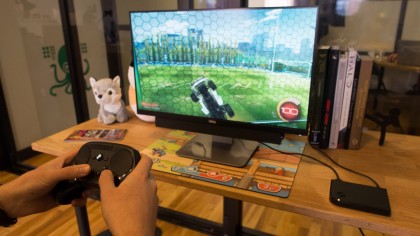
Single-player titles worked just as I'd hoped on the highest streaming settings with very few latency spikes. However, the few instances when the Steam Link did end up being more of a nuisance than a blessing was during online gameplay. Rocket League, as I mentioned earlier, is not a system-crushing title by any means. But still, adding the element of online multiplayer on top of the game streaming was more than my networking gear could churn out with grace. Knocking the streaming quality down to "Balanced" was enough of a load off of my setup that playing Rocket League through the Link felt as fluid as ever.
As disappointing as it is to have to reduce the visual fidelity in favor for smoother gameplay, it's not a fault of the Link. Instead, the blame falls on the limitations of my PC and bottom-shelf router. I'm confident that gamers with a more premium router or switch will experience little to no latency while streaming on "Beautiful" settings during online matches.

Stepping away from the computer isn't something that I have a habit of doing every time I want to play a game on Steam. I do, though, share a computer desk at home, so it's sometimes necessary (or, at least, polite) for me to head to the couch to get my game on if I want to keep the peace. However, I've never been able to bring Steam with me. But now that the Steam Link is a thing that exists, I'm spoiled to the point that I see little reason to return to playing on my desk.
A look at the Big Picture
Steam Link is a product that's only as good as the sum of its many required parts. I've explained how the strength of your PC and networking hardware play a large part in that equation. But its Big Picture interface is, and always will be, the backbone responsible for tying each piece together.
I've been using this controller-friendly mode since its introduction almost three years ago, which is long enough to witness its marked improvement. Even back then, it showed promise, but it also showed that Valve's early draft of adapting the features that worked so well on the desktop client over to the TV was a rough one.
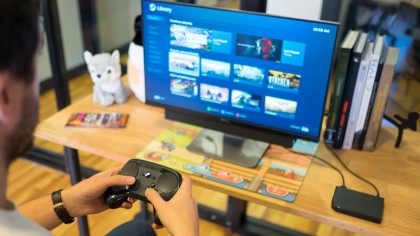
The latest version of Big Picture that Steam users see when they boot up is, by far, the best iteration yet, but still not without its share of flaws. It's been spit-shined to look and respond beautifully when you're just tinkering around, but, if your Steam usage is anything like mine, you're likely to run into issues when you run it through some tougher paces. Accepting an invite to join a multiplayer session while playing another game, which is just an example of an everyday task for me, sometimes doesn't work. Also, certain games take much longer to boot into, resulting in me staring puzzled at a black screen, wondering if I should reboot my system.
Although minor and definitely addressable through a patch, these issues are especially easy to spot if you're coming from the console realm, a sector of tech that, in recent years, lives and dies by its user interface. I have a lot of enthusiasm for the future of Big Picture, but it's still early days for Valve in the living room, and it shows.
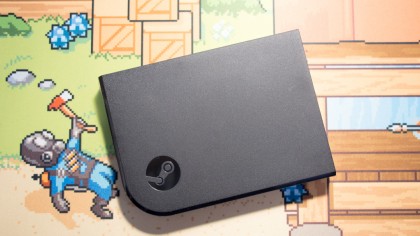
Verdict
That the Steam Link exists at all is a thoughtful gesture to the millions of gamers who already have a gaming PC and steadfast local connection. Buying into a Steam Machine isn't an ideal solution for everyone, and I'm glad Valve recognizes that.
That said, the Steam Link isn't the only game streaming device out there. The $99 (£99, about AU$140) Razer Forge TV and $199 (around £130, AU$255) Nvidia Shield can also perform the heavy lifting of streaming from your PC to a TV. These boxes also act as a more comprehensive multimedia solution, thanks to the Android TV operating system built into each.
Steam Link has a leg up on the competition in a few ways. It can stream any game that you own on Steam, whereas the Nvidia Shield can only stream a limited (by comparison) selection of games from PCs stocked with a supported Nvidia graphics card. The Steam Link is more financially viable than the Razer Forge TV because you can supply your own mouse, keyboard or gamepad. Razer's streaming box requires you to buy into its lineup of accessories.
Comparison aside, gamers who are new to Steam have a decision to make before they invest in Steam Link. Do Valve's pre-built Steam Machines sound more up your alley, or are you up for the challenge of building your own computer? If you go with the former, the Steam Link becomes a redundancy, as Steam Machines are built to fit into your living room.
The Steam Link makes near-perfect sense if you envision yourself wanting to make serious upgrades to a custom-built PC. You can rest easy knowing that Valve's streaming box will scale with any improvements you make to your computer or networking setup in the future.
Cameron is a writer at The Verge, focused on reviews, deals coverage, and news. He wrote for magazines and websites such as The Verge, TechRadar, Practical Photoshop, Polygon, Eater and Al Bawaba.
